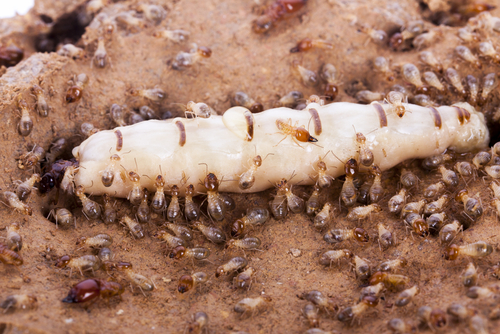
How to Prevent Termites Coming To My Home?
June 14, 2021
What do Professionals Use to Kill Termites?
August 4, 2021What Are The Different Types Of Termites?

What Are The Different Types Of Termites? When it comes to termite infestation, there are three types of termites that can invade your home in Singapore. Read on to know how to identify and deal with each of them.
1. Subterranean Termite

The subterranean termite is the most common species of white ants in Singapore. They make up for the most termite-caused wood damage. You can identify them by the mud shelter tubes they create on different house structures to protect the colonies.
These termites eat on cellulose-rich wood items like furniture, books, and newspaper. Also, they chew through wooden foundation beams, which poses the highest damage risk.
Although these insects need years to cause considerable damage, confronting them in the initial stages of infestation is crucial. One colony has a population of 20000 termites which can grow to millions. The larger the colony, the harder it to exterminate it.
That’s why you have to address the invasion as soon as possible.
- How to get rid of them?
Fighting subterranean termites is not an easy task. The spray insecticide will kill only the soldiers and the workers that act outside the nest. The reproductive individuals will always stay in the shelter and give birth to new generations of termites.
In this way, the colony will keep growing in spite of your efforts to exterminate it. For a more thorough treatment, you are good to call in a team of professional pest control experts.
They will use their tools to exactly identify the entry points and nest of the termite colony.
Then, they will carry out a species-customized spot treatment to destroy the whole population of pests. Bait system and liquid termiticide injection are the most efficient methods of eliminating termite nests.
2. Dry wood termite

Drywood termites create colonies of 2500 individuals, which is significantly less than subterranean termites. This is why eliminating them is easier and takes fewer efforts and money. Drywood termites appear after a sudden rise in temperature.
They settle on support beams, attic framings, roof eaves, and other drywood structures. This type of termite don has a developed caste system. There are no workers to collect cellulose and share it with the superiors.
Most of the time, it’s the immature termites that do the cellulose collecting task.
- How to get rid of them?
The best treatment for drywood termites is their prevention. Try to keep scrap wood 20 m away from the house. Also, seal any crack around the foundation of your home to ensure tiny monsters have no entry point.
However, if you notice hard and dry fecal pellets near wood structures, be sure an infestation is on the way. Your first step is to seal the access points to prevent other termites come in. Alternatively, you can use bait systems to form a barrier for pests trying to enter your house.
Since a drywood termite colony is low in number, they can’t build shelter tubes. Hence, their nests are more vulnerable and easy to eliminate. Identify the nests by fecal traces and apply aerosol insecticide or inject liquid termiticide to destroy the pest population.
The injection is better for easy-to-reach areas, while aerosols are for hardly accessible nests.
3. Dampwood termite

Damp wood termite appears in dump areas. So if the wood structures of your home are full of moisture, they become a preferred destination for damp wood termites. Oftentimes, an invasion of this type suggests other issues, such as roof leaks, drainpipe cracks, and wood-decaying.
Dump wood termites are the most secretive and silent white ant species. They don’t build shelter tubes, but they protect their nest by covering the entry points with their feces. So identifying them at the initial stages of infestation is not at all easy.
- How to get rid of them?
The best way to eliminate damp wood termites is to replace the wood they have inhabited. It’s more than likely that the wood has become the victim of leaks and now is about to decay. You are better off replacing this damaged timber with a dry and durable one.
What Are The Different Types Of Termites? – Final thoughts

Given the humid weather in Singapore, termite infestations are hard to avoid. There are three types of termites that are more likely to invade your house: subterranean, drywood, and dump wood. The best way to fight them is to prevent them. Inspect your house regularly for potential cracks and crevices in the foundation walls. If you notice any, seal them. Creating a termiticide barrier around your house will also do a great job of keeping termites at bay.




